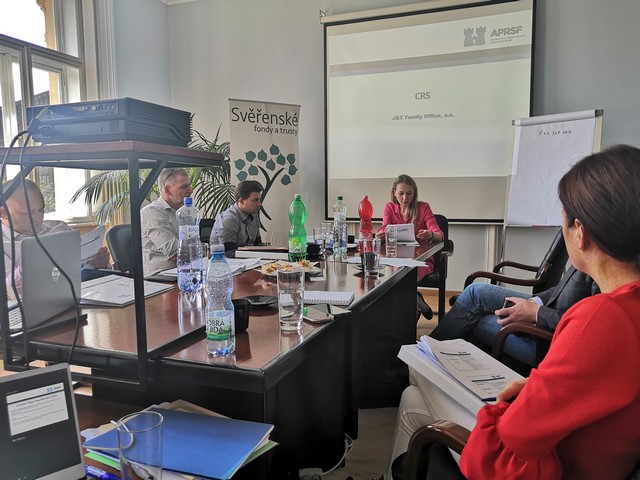Many people ask me what the difference is between a foundation and a trust.
There is a short answer to this question and a longer answer.
Here’s the short answer:
“What Is the Difference Between a Trust and a Foundation?”
“Not much”.
They are more or less the same animal wearing different fur, and they help the same sort of people achieve the same objectives in the same way.
There are of course some differences in the way that they work – but if you look at the big picture those differences are really not important.
What IS important is your goals and objectives. Whether a trust or a foundation (or something else) is the right choice to help you achieve those objectives is very much a secondary question. A question that is normally answered towards the end of the planning process – not at the start.
Here’s the longer answer:
“What Is the Difference Between a Trust and a Foundation?”
Trusts have been around for a long long time – since the 12th Century.
They are used by millions of families around the world to own, protect and manage family assets. However, most of those millions of families live in ‘common-law’ countries, countries that inherited their legal systems from the British. Examples include the UK obviously, but lots of other countries that have some historical connection with Britain through colonisation or the British Commonwealth. That’s a lot of the world; the USA, Canada, Australia, New Zealand, India, Kenya, Singapore, Hong Kong, and lots of tiny islands in the Caribbean and elsewhere.
Family foundations are more often found in ‘civil law’ countries, such as in continental Europe. They too have a long history with roots dating back to Mediaeval Europe where they were created for charitable purposes. While they are still commonly used in this way, over time foundations have evolved so that they now perform many of the functions and provide many of the benefits of trusts – but in a way that ‘fits’ more easily into their legal system.
Having said that there are an increasing number of countries that offer both trusts and foundations, each structure being tailored to a particular audience.
The law of trusts and foundations varies a lot from place to place, but it is possible to make some generalisations as follows:
The basics are the same.
In both the case of trusts and foundations, they are established by someone (The Settlor for Trusts, the Founder for foundations) for the benefit of some other people (The beneficiaries).
The founder, when he or she sets up the trust or foundation also creates a set of rules – covering who gets the money and when, as well as many other things.
A third person, or more often a group of people (The Trustees for trusts, the Foundation Council for foundations) acts as a kind of board of directors and is legally responsible for carrying out the founder’s wishes and acting in the interest of the beneficiaries. (Some foundations and trusts can also be created to achieve a purpose rather than for the benefit of beneficiaries – but that’s a topic for another day).
So far, the same thing . . but
Trusts are not legal entities. Foundations are
Trusts are best thought of as a set of legal relationships between the people involved. The settlor establishes the trust and puts the assets into it. The assets are managed by the trustees, for the benefit of the beneficiaries (normally the settlor’s family).
Nobody is the absolute owner of the assets. The trustees and the beneficiaries have ownership rights of a kind, but the important thing is that even though the settlor remains firmly in the driver’s seat, the assets don’t legally belong to him or her anymore. If he or she dies, goes bankrupt or something of the sort, the trust carries on regardless – with the assets being protected, in accordance with the settlor’s instructions for the benefit of the beneficiaries.
If you look at the bank account for a trust, you will find that it is in the name of “Joe Smith and Fred Blogs as Trustees for the XYZ Trust”. The trust does not own the money in the account. Instead it is ‘owned’ (or perhaps better to say “managed”) by Joe and Fred on behalf of the trust.
In contrast, foundations are legal entities in the same way that a company is a legal entity. They are created by and under the law of the country in which they are based. Otherwise, in practice the structure is very similar. The underlying legal concepts and theory is vastly different – but as we said above, the end result is not.
From this difference flows the biggest practical difference. Because foundations are legal entities, they are registered on the commercial register of their home country. This can be a big positive if they are operating in a Civil law country, because being “another kind of company” generally makes doing things like owning assets, opening bank accounts, and signing contracts in those countries much easier.
For example, the bank account will be in the name of “XYZ Foundation”
So if you are going to be operating in a ‘civil law’ country, then a foundation often makes a lot of sense for this reason alone. (In some civil law countries, trusts are not recognised at all, which makes the choice rather simple). In common law countries, where trusts are common, they often make more sense than foundations.
Complexity
Foundations are established under the government-made laws and regulations of the relevant state. As a general rule, that makes foundations more complicated and more tightly regulated. There is more paper and more forms to fill in and more interaction with the state. This means that it is often more expensive to set up and run a foundation than a trust.
Foundations also often have some sort of minimum capital requirement. For example in Switzerland this is CHF 50,000. In contrast, trusts don’t have any minimum (Well at least no minimum to speak of – there must be at least something in a trust, even 1 euro – otherwise you don’t actually have a trust).
Trusts on the other hand can exist based on a single document – which is often not filed anywhere. (In fact, it is possible in my places to establish a trust without any paper at all – although that is usually not a terrific idea) . Trusts can also be extremely simple (or not, as you wish). They are also, as a general rule much more flexible, cheaper, easier to run, and as we shall see, more private.
Privacy
Because a foundation is registered in the commercial register, there is also normally some at least basic information available to the public about it. Trusts in contrast are not registered on the commercial register so there is often much less public information available.
It is worth noting that due to anti-money laundering rules, many countries are now seeking to register Trusts in some form either via registers of trusts or registers of beneficial ownership. However, even where this is the case, access to that information is typically more restricted than for foundations.
Relocating
Finally, it is usually relatively easy to redomicile a trust to a different country – that is move somewhere else – perhaps because of changes to tax laws or family situations. In the case of foundations, that’s often much more difficult.
There is an even longer answer than this of course. If you would like more information, please contact us.
 Many ordinary Czech people know something about trusts, and are increasingly interested in knowing more. They are interested not just in how trusts can help the wealthy, but also how they can help their own families.
Many ordinary Czech people know something about trusts, and are increasingly interested in knowing more. They are interested not just in how trusts can help the wealthy, but also how they can help their own families.



 Not surprisingly, I disagree with these three avoidance strategies. If you have not (at the very least) thought about what happens to your assets when you die, then it is highly likely you are creating a big mess for your family to clean up. Not only that, but unplanned inheritances very often result in serious family conflict. They also deliver results that are not actually what you would have wanted (if only you had actually thought about it).
Not surprisingly, I disagree with these three avoidance strategies. If you have not (at the very least) thought about what happens to your assets when you die, then it is highly likely you are creating a big mess for your family to clean up. Not only that, but unplanned inheritances very often result in serious family conflict. They also deliver results that are not actually what you would have wanted (if only you had actually thought about it).




















